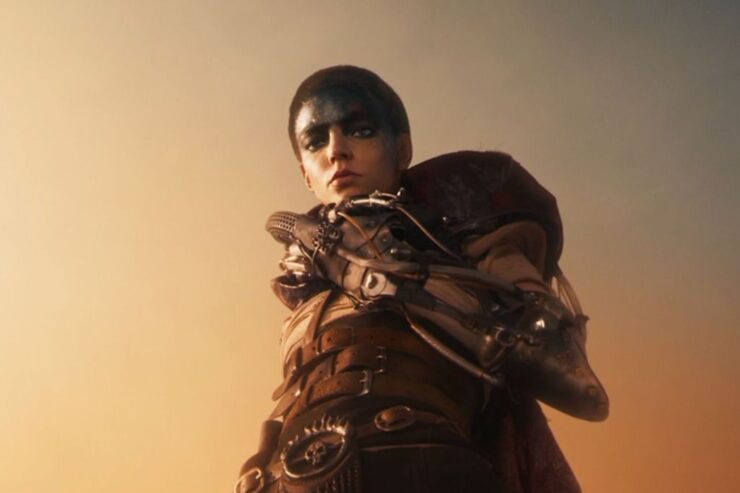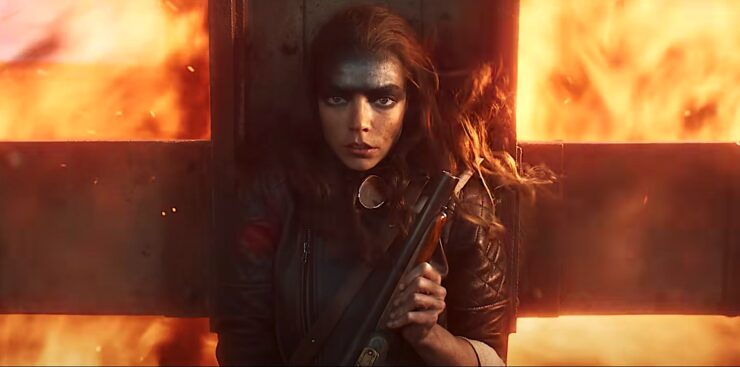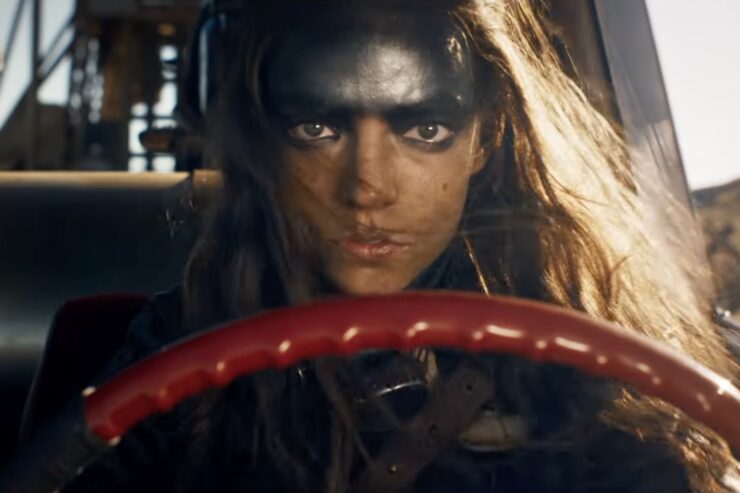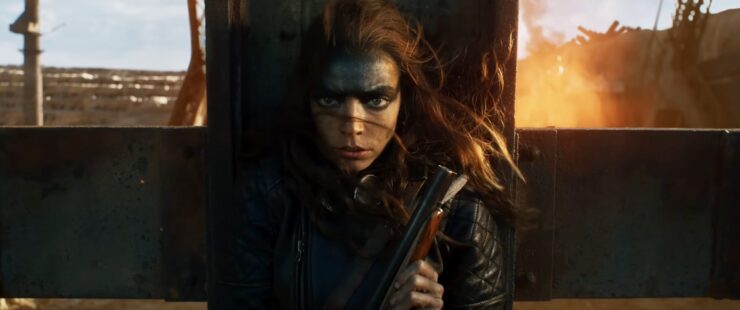I remember where I was, and what theater I was in when I saw Mad Max: Fury Road. I remember feeling myself almost rise out of my theater seat, in the Battery Park movie theater in downtown Manhattan, when Furiosa slugged a man in the face with her stump.
In case you haven’t seen Fury Road since then and don’t have as strong a memory as I do for the particulars of the film, or haven’t seen Furiosa yet and want a sense of how things go, here’s a brief, but spoiler-filled paragraph to catch you up to speed:
Furiosa is a child born in a post-apocalyptic world where water is as scarce as ethics and morals in the wasteland. Gangs rove the deserts in search of bullets, water, and food, will do just about anything to get it, and no one cares about the safety of others. Also, things got weird after the fall of civilization. No one is “sane.” Furiosa is kidnapped from likely the only well-watered and -fed place in the world, watches her mother get murdered by Dementus, and spends the rest of her life trying to get home.
During the course of her time on screen, she survives captivity, the loss of an arm, attempted assaults, the loss of a partner, and living in a misogynistic hellscape.
And she tries to rescue others on her quest to just go home again.
I hoped that when I saw the new movie, Furiosa, that I would find myself with similar emotions. But I was worried—would the film have the same disability justice motif that had made Mad Max: Fury Road so compelling to me? I assumed that the character would not have a disability for what I believed would be most of the movie.
Prologues are writing a history of what came before, and that isn’t always a good thing. The upcoming Quiet Place: Day One is rewriting history, it looks like: creating a story about the monsters that prey on sound without the benefit of the Deaf-centric heroism that made the original two films so compelling to me. It is erasing what made the franchise groundbreaking to go to the safe ground of non-disabled heroes.
I was utterly delighted to see that George Miller was not afraid to be bold.
Imperator Furiosa is a disabled heroine, from start to finish. Within the first section of the film, she is kidnapped from her home, witnesses the horrific loss of her mother, and becomes selectively mute. The character does not speak (though she does scream) until an hour and fifteen minutes into the film.
Selective mutism is a disability, typically acquired through experiencing a traumatic event. As someone who lost a parent to a disease that did horrible things to my father’s body, I can confirm that the loss of a parent is traumatic, whether it is by a disease that wreaks havoc on the body, or a demented wasteland warlord who does so.
And so even before Furiosa loses her arm, she is disabled. This, too, is an excellent writing and directorial choice. Disabled people know how to adapt to new disabilities.
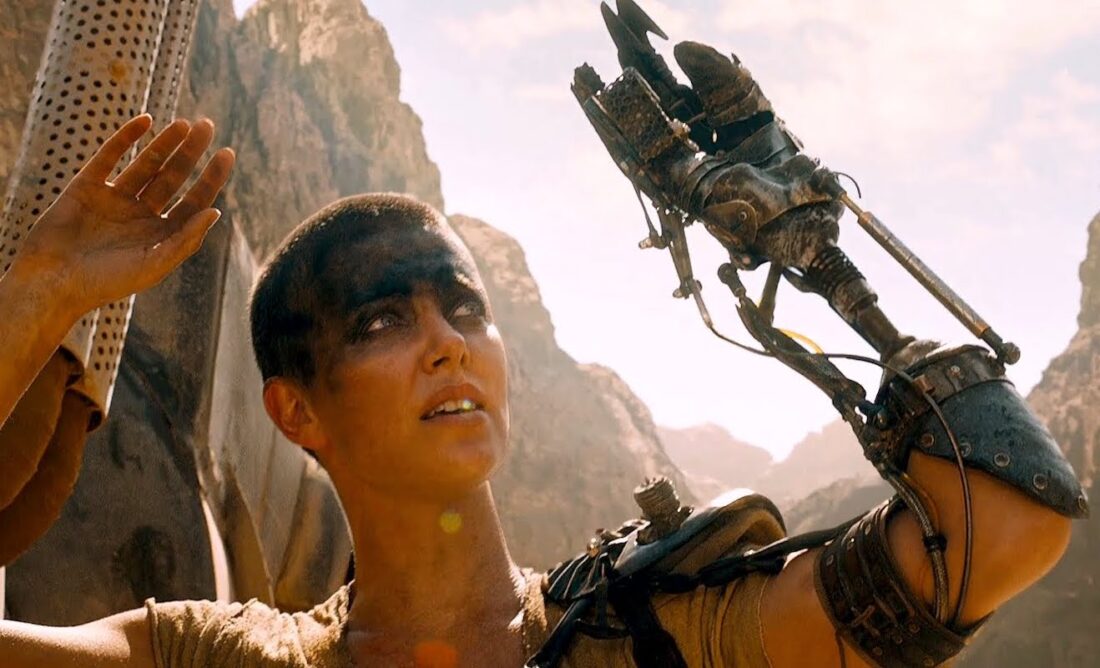
As an example, when I started to lose more of my hearing, and had to go from one hearing aid to two, many people asked me if I was sad. Well, okay, they didn’t ask. They assumed that I was sad. The answer is that I wasn’t sad at all. My adaptive aids would work better, because I would be able to use the bluetooth capabilities that only one hearing aid denied me access to.
Furiosa already knew how to adapt. She already had a sense of what a disabled body felt like. Adaptation was a skill she already had acquired, so even though the tools were new, the sensation in her body simply wasn’t.
Furiosa has always been disabled. And because of that, Miller is telling a disabled story.
One of the major critiques that I have had in my decade-long career as a media critic on disability is that there are no disabled heroes or heroines written by non-disabled people. We do not have blockbusters. But as I look back, I see that Imperator Furiosa was, and is, a turning point in our collective imagination.
Much like in the first film, there was a moment in Furiosa when I found myself almost leaping out of my seat because the emotions within me were too much to hold. Furiosa had tattooed upon her left arm the map to get home, the only vestige she had left of her mother, and her only way back to where her childhood began. When she awakes and knows that her arm is gone, that her way home is gone, she transforms her trauma with her knowledge of the rigs, given to her by the people who helped her stay safe.
What is truly empowering about Furiosa is that she takes what she needs, she fights for what she wants, and even when she fails, she perseveres. For so many disabled women, this is our reality. We need something, and we don’t get it, and we keep fighting even though the odds are against us.
In the real world, people take ownership of their prosthetics, too. I have gemstone sparkly hearing aid molds, with streaks of gold in them. It looks like a tigers eye gemstone is sitting in my ear canal instead of a piece of plastic. Friends have modified their wheelchairs with bike spokes, or painted them fancy colors, or added lights (a little like a war rig!) and more.
Owning a prosthetic, crafting it in some way with our own hands, is taking ownership of bodies that others want to control. It is the supreme act of self determination to craft for yourself the thing that you need most in this world.
And Furiosa doesn’t just craft an arm. She crafts a tool. She crafts something that has pincers, she crafts something that sits just right on her shoulder, she crafts something that has tiny pulleys and levers so that she can control each movement. And by the second film, it is the key to her resistance, because it drives her rig.
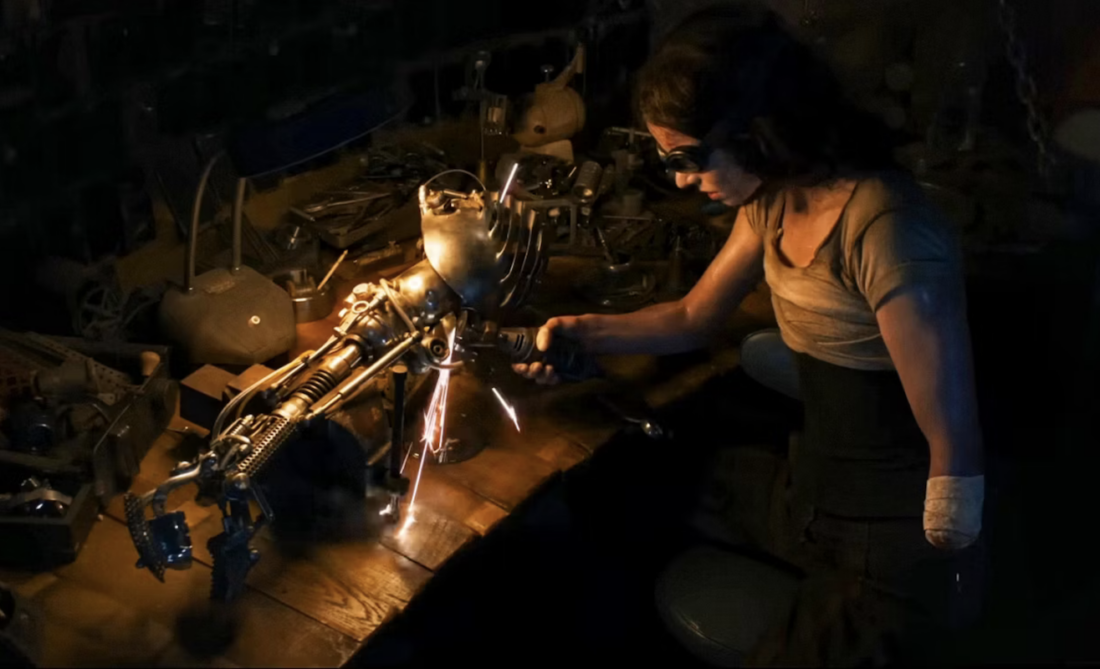
Furiosa cannot be contained because she has found the well of self reliance that every disabled woman has to find. It is an endless well of rage, of frustration, and of body awareness. Watching Furiosa reminded me of my own power, it reminded me of the power of other disabled women I know. It echoed our rage, and our resistance, and our autonomy.
And at the end, when Furiosa is screaming at her abuser to “give it back,” I felt myself screaming with her. Give it back. Give my dignity back. Give my childhood back. Give me the same things that everyone else has, and give them to me because I deserve it as a person in the world.
Don’t give me pity, give me autonomy. Give me choices. Give me decisions. Give me my people.
Furiosa is a testament to disabled resilience. Our disabilities are so often borne from trauma—even when we are born with our disabilities, the people who gave birth to us, who witnessed our bodies when they were small and vulnerable, saw us as traumas. Tiny traumas in blankets.
And we survive. We thrive. Furiosa does not give up, she does not surrender. She builds her resistance with her own hands, and she takes her vengeance where she can.
Furiosa is our first disabled heroine who is reliant upon no one, and I cannot wait to see more heroines like her. Because now we know: the audience is ready for us.










